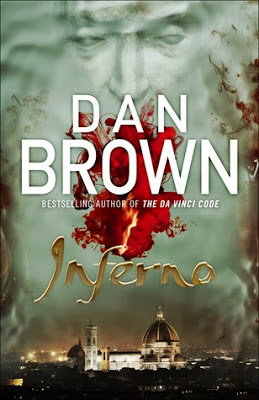Book Review: Inferno
The much anticipated Dan Brown's novel is finally here! The fourth adventure featuring Harvard Symbology professor Robert Langdon is a breathless thrill ride if you can just ignore the clumsy and long-winded prose that can put a travel guide to shame. Brown may not be notable for his literary talents, but his rather interesting marriage of historical (while not necessarily accurate all the time) and conspiracy elements make for an engrossing read.
And Metro was quite bang on target when it said Brown's grasp on adjectives is never going to win him the Pulitzer - very evident when you read the clunky descriptions of cathedrals, basilicas and whatnot. So dying to know the story? Well, you have the Mickey Mouse watch sporting nerdy claustrophobe, accompanied this time by a young attractive pony-tailed doctor Sienna Brooks, racing against time to avert an imminent global catastrophe in a labyrinthine riddle based on Dante's epic Inferno, the first part of The Divine Comedy.
Jam-packed with twists and Brown's trademark cliffhangers, Inferno outgrows its templatized beginnings to deliver a relentless roller-coaster that's much better than his previous outing The Lost Symbol and yes, almost at par with his blockbuster The Da Vinci Code.
After a man jumps to death in Florence, the narrative switches to Langdon who wakes up from a nightmare to discover that he's in a hospital, suffering from a case of retrograde amnesia. He has no recollection of the past two days and more importantly as to his presence in Florence when he was supposed to be in Cambridge, teaching the students at Harvard. With a spiky-haired lady assassin giving him the chase, Langdon is saved by Dr. Sienna Brooks, and thus begins a mad scramble through Florence, Venice and Istanbul as the duo dash around important sights looking for clues with the help of Botticelli's Map of Hell.
Central to the story is a very relevant theme of overpopulation plaguing the world today (despite all that ludicrous genetic manipulation mumbo-jumbo), something of an interesting departure for Brown. And then there is this wry sense of humour when Robert's publisher asks him to write a "Fifty Shades of Iconography" or when Robert and Sienna talk about being in the wrong country instead of a wrong museum.
A few letdowns. The parallel villain sub-plot feels forced, like as if it was introduced for the sole purpose of misdirection, even as the writing shows little improvement and there's practically nothing new about Langdon (can we get to see some other shades of his personality please?) that we haven't come across before. Ultimately, this futuristic historical thriller offers plenty of popcorn entertainment in generous doses and could very well storm its way into every best seller list in the coming weeks. Watch out!
 |
| Inferno |
Jam-packed with twists and Brown's trademark cliffhangers, Inferno outgrows its templatized beginnings to deliver a relentless roller-coaster that's much better than his previous outing The Lost Symbol and yes, almost at par with his blockbuster The Da Vinci Code.
After a man jumps to death in Florence, the narrative switches to Langdon who wakes up from a nightmare to discover that he's in a hospital, suffering from a case of retrograde amnesia. He has no recollection of the past two days and more importantly as to his presence in Florence when he was supposed to be in Cambridge, teaching the students at Harvard. With a spiky-haired lady assassin giving him the chase, Langdon is saved by Dr. Sienna Brooks, and thus begins a mad scramble through Florence, Venice and Istanbul as the duo dash around important sights looking for clues with the help of Botticelli's Map of Hell.
Central to the story is a very relevant theme of overpopulation plaguing the world today (despite all that ludicrous genetic manipulation mumbo-jumbo), something of an interesting departure for Brown. And then there is this wry sense of humour when Robert's publisher asks him to write a "Fifty Shades of Iconography" or when Robert and Sienna talk about being in the wrong country instead of a wrong museum.
A few letdowns. The parallel villain sub-plot feels forced, like as if it was introduced for the sole purpose of misdirection, even as the writing shows little improvement and there's practically nothing new about Langdon (can we get to see some other shades of his personality please?) that we haven't come across before. Ultimately, this futuristic historical thriller offers plenty of popcorn entertainment in generous doses and could very well storm its way into every best seller list in the coming weeks. Watch out!

Comments
Post a Comment